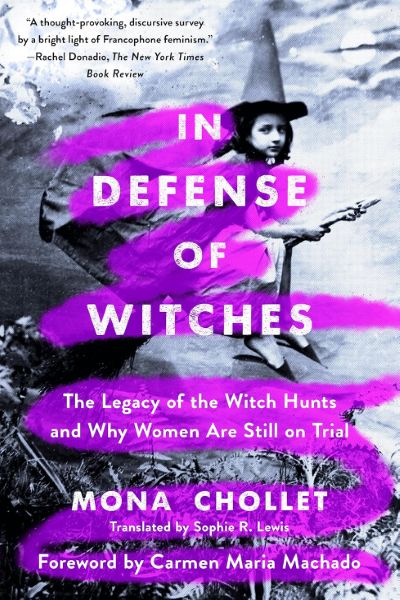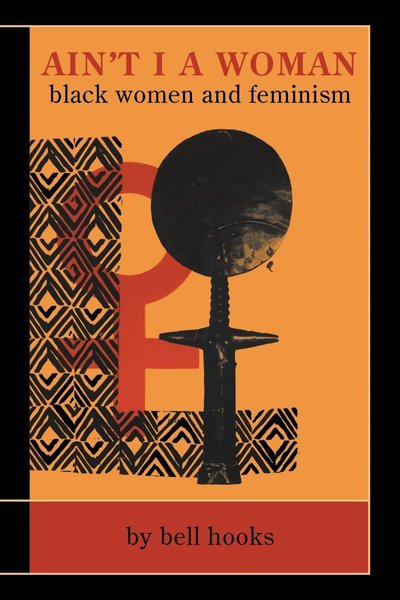In Defense of Witches: The Legacy of the Witch Hunts and Why Women Are Still on Trial
A powerful feminist analysis connecting historical witch hunts to contemporary attacks on women's autonomy. Chollet examines how the persecution of 'witches'—independent women, childless women, and aging women—established patterns of misogyny that continue to shape how society treats women who defy traditional roles.

📝 Book Review
“In Defense of Witches: The Legacy of the Witch Hunts and Why Women Are Still on Trial” represents a groundbreaking feminist analysis that draws powerful connections between historical witch persecution and contemporary forms of misogyny. Mona Chollet’s penetrating work reveals how the systematic targeting of women during the witch-hunting era established enduring patterns of persecution that continue to shape how society treats women who challenge traditional expectations and roles.
Mona Chollet, a Swiss-French journalist and author who has worked as an editor for Le Monde diplomatique for twenty-five years, brings exceptional analytical skills and cultural insight to this examination of historical and contemporary gender-based persecution. Her background in journalism and cultural criticism enables her to weave together historical analysis, sociological observation, and personal reflection in ways that illuminate both past and present forms of women’s oppression.
Originally published in France in 2018 and translated into English in 2022, the book has gained international recognition for its innovative approach to understanding how historical persecution patterns continue to influence contemporary attitudes toward women’s autonomy, sexuality, aging, and independence. Chollet’s work demonstrates how the figure of the “witch” represents not simply a historical curiosity but a persistent archetype used to demonize and control women who refuse to conform to patriarchal expectations.
The Architecture of Persecution
Chollet begins by establishing the historical scope and systematic nature of witch persecution, revealing how the witch hunts represented one of the most extensive and coordinated campaigns of gender-based violence in European history. Between the 15th and 18th centuries, an estimated 80% of those executed for witchcraft were women, demonstrating the clearly gendered nature of this persecution.
The analysis reveals how witch hunting was not simply random violence but represented a systematic effort to eliminate particular types of women who threatened patriarchal social order. The persecution targeted women who possessed knowledge, independence, or authority that challenged male dominance, while simultaneously serving to terrorize all women into compliance with traditional gender roles.
Chollet demonstrates how the witch hunts coincided with broader social and economic changes that threatened women’s traditional sources of power and autonomy. As communities became more centralized and commercial, women’s roles as healers, midwives, and local leaders came under attack from male-dominated professional and religious institutions seeking to consolidate their authority.
The book reveals how the figure of the witch served multiple ideological functions, providing a convenient scapegoat for social anxieties while justifying the systematic subordination of women. By portraying powerful or independent women as evil and dangerous, witch-hunting ideology created frameworks for understanding female power as inherently threatening and destructive.
Three Archetypes of Persecution
Chollet organizes her analysis around three distinct but interconnected categories of women who were particularly targeted during witch hunts, demonstrating how these same archetypes continue to face persecution in contemporary society. This framework provides crucial insights into how historical patterns of misogyny persist in modern forms.
The first archetype is the independent woman—particularly widows and unmarried women who lived outside male protection or control. These women often possessed property, ran businesses, or exercised authority that challenged assumptions about female dependence and subordination. Their persecution during witch hunts established lasting suspicion of women who achieve economic or social independence.
The second category encompasses childless women and those who sought to control their fertility. During the witch-hunting era, women’s traditional knowledge about contraception, abortion, and childbirth came under attack as male medical professionals sought to monopolize reproductive healthcare. The persecution of these women established frameworks for controlling female reproduction that persist today.
The third archetype involves aging women, who have historically been objects of fear, mockery, and disgust in patriarchal societies. Older women, particularly those who had outlived male relatives and gained some independence, were disproportionately targeted as witches. This persecution established lasting cultural associations between aging women and threat, evil, or worthlessness.
Contemporary Manifestations
Chollet’s most important contribution lies in her demonstration of how these historical persecution patterns continue to operate in contemporary society, albeit in modified forms. She reveals how modern institutions, cultural norms, and social expectations continue to punish women who embody the same characteristics that once marked them as witches.
Independent women today face persistent skepticism about their motivations, competence, and character, particularly in professional and political contexts. Women who achieve success without male support are often portrayed as manipulative, ruthless, or unnatural, echoing historical stereotypes about dangerous female power.
Childless women continue to face judgment, interrogation, and pressure that reflects historical anxieties about women who control their reproductive choices. Contemporary debates about contraception, abortion, and childcare policies reveal ongoing attempts to regulate female reproduction in ways that parallel historical persecution of women’s reproductive autonomy.
Aging women face systematic marginalization, invisibility, and devaluation that reflects deep-seated cultural fears about female aging. Media representations, employment discrimination, and social attitudes toward older women demonstrate how historical contempt for aging women persists in contemporary forms.
The Intersection of Misogyny and Other Oppressions
Chollet provides sophisticated analysis of how witch persecution intersected with other forms of oppression, including class, race, and religious discrimination. She reveals how accusations of witchcraft were often used to target women who were already marginalized by poverty, ethnic difference, or religious nonconformity.
The analysis demonstrates how witch hunts served broader projects of social control that extended beyond gender to encompass efforts to eliminate traditional folk practices, suppress peasant autonomy, and consolidate elite power. Women were particular targets because they often served as repositories of traditional knowledge and community leadership that threatened emerging forms of centralized authority.
Chollet examines how colonial expansion and witch persecution were interconnected processes, with European colonizers using accusations of witchcraft and devil worship to justify violence against indigenous peoples while simultaneously persecuting European women who maintained traditional practices and beliefs.
The book reveals how economic factors shaped witch persecution, with property seizure often providing material incentives for accusations while economic anxiety created social conditions that made scapegoating appear attractive to struggling communities.
The Medical and Sexual Dimensions
A crucial aspect of Chollet’s analysis involves examining how witch persecution was intimately connected to efforts to control women’s knowledge about medicine, sexuality, and reproduction. She reveals how the witch hunts coincided with the professionalization of medicine and the systematic exclusion of women from healing practices they had traditionally dominated.
Women’s traditional roles as healers, midwives, and herbalists brought them into conflict with emerging male medical professions that sought to monopolize healthcare while dismissing traditional knowledge as superstition or evil magic. The persecution of wise women and folk healers served to eliminate competition while establishing male medical authority.
The book examines how accusations of witchcraft were often connected to women’s sexuality, with particular suspicion directed toward women who were seen as too sexually active, too sexually independent, or too knowledgeable about sexual matters. These accusations revealed deep anxieties about female sexual agency and autonomy.
Chollet analyzes how historical fears about witches’ sexual powers continue to influence contemporary attitudes toward women’s sexuality, from slut-shaming to anxieties about female sexual education and empowerment. The historical association between dangerous women and sexual knowledge continues to shape cultural attitudes toward women’s sexual autonomy.
The Role of Religion and Ideology
The book provides detailed analysis of how religious ideology provided frameworks for understanding and justifying witch persecution, while revealing how secular ideologies continue to serve similar functions in contemporary contexts. Chollet demonstrates how religious authorities used theological arguments about women’s spiritual weakness and susceptibility to evil to justify systematic persecution.
The analysis reveals how Christianity’s complicated relationship with the feminine divine—evident in both reverence for Mary and suspicion of female spiritual power—created theological frameworks that could be used to justify both protection and persecution of women. These contradictory impulses continue to influence contemporary religious attitudes toward women’s roles and authority.
Chollet examines how secular ideologies have inherited many of the same patterns, with scientific rationalism often used to justify discrimination against women through claims about biological differences, psychological limitations, or natural roles. The shift from religious to secular justifications for women’s subordination reveals how misogynistic logic adapts to new cultural contexts.
The book demonstrates how contemporary anti-feminist movements often employ language and logic that echoes historical witch-hunting rhetoric, portraying feminists as dangerous, unnatural, or evil forces that threaten social order and traditional values.
Literary and Cultural Analysis
Chollet incorporates extensive literary and cultural analysis to demonstrate how the figure of the witch has been used throughout Western culture to represent both female power and female danger. She examines how literature, art, and popular culture have perpetuated and sometimes challenged stereotypes about dangerous women.
The analysis includes examination of fairy tales, novels, films, and other cultural productions that have shaped popular understanding of witches and witchcraft. Chollet reveals how these cultural representations often reflect broader anxieties about female power while simultaneously providing frameworks for understanding and containing female threat.
The book examines how contemporary feminist movements have sought to reclaim the witch as a symbol of female power and resistance, transforming a figure of persecution into one of empowerment. This cultural reclamation demonstrates both the persistent relevance of witch imagery and its potential for feminist transformation.
Chollet analyzes how horror films, gothic literature, and other cultural forms continue to use witch-like figures to explore contemporary anxieties about women’s power, sexuality, and autonomy, revealing how historical persecution patterns continue to influence cultural imagination.
Contemporary Women’s Experiences
Throughout the book, Chollet weaves together historical analysis with contemporary women’s experiences, demonstrating how the three archetypes of witch persecution continue to shape women’s lived experiences in modern contexts. She provides detailed examination of how independent women, childless women, and aging women continue to face forms of discrimination and persecution that echo historical patterns.
The analysis includes exploration of workplace discrimination against women who don’t conform to traditional feminine stereotypes, revealing how professional women often face suspicion, sabotage, and exclusion that reflects historical fears about female power and independence.
Chollet examines how contemporary reproductive politics continue to target women’s autonomy over their bodies and fertility, from abortion restrictions to fertility surveillance to judgmental attitudes toward childlessness. These contemporary battles reveal how historical attempts to control women’s reproduction persist in new forms.
The book addresses how aging women face systematic invisibility and devaluation in contemporary culture, from employment discrimination to media marginalization to social isolation that reflects deep-seated cultural fears about female aging and post-reproductive life.
Resistance and Reclamation
While primarily analytical, Chollet concludes by examining how contemporary women and feminist movements have worked to challenge and transform the legacy of witch persecution. She explores how the figure of the witch has been reclaimed as a symbol of female power, wisdom, and resistance rather than evil and danger.
The analysis includes examination of feminist witchcraft movements, goddess spirituality, and other efforts to create alternative frameworks for understanding female power and autonomy. These movements demonstrate how historical symbols of persecution can be transformed into resources for empowerment and resistance.
Chollet examines how contemporary feminism has worked to challenge ageism, support reproductive autonomy, and celebrate female independence in ways that directly counter historical persecution patterns. These efforts reveal both the persistence of historical problems and the possibility of meaningful transformation.
The book explores how knowledge and practices that were once persecuted as witchcraft—including herbalism, midwifery, and holistic healing—have been reclaimed and legitimized through feminist and alternative health movements, demonstrating how historical persecution can be overcome through sustained resistance and cultural change.
Global and Contemporary Perspectives
Chollet’s analysis extends beyond European and North American contexts to examine how witch persecution and its legacy operate in global contexts, including contemporary witch hunts that continue in various parts of the world. This global perspective reveals how patterns established during historical European witch hunts continue to influence contemporary forms of gender-based violence.
The book examines how colonial expansion exported European witch-hunting ideologies to other parts of the world, creating lasting impacts on how women’s power and autonomy are understood and regulated in diverse cultural contexts. These colonial legacies continue to influence contemporary gender relations and women’s status globally.
Chollet analyzes how economic development and social change continue to create conditions where women may be scapegoated for community problems or targeted for possessing knowledge, independence, or resources that threaten traditional power structures.
Critical Reception and Impact
“In Defense of Witches” has been widely praised for its innovative approach to understanding historical and contemporary women’s oppression, with critics noting Chollet’s ability to draw meaningful connections between past and present forms of persecution. The book has been recognized for its accessibility and relevance to contemporary feminist struggles.
The work has been particularly influential in feminist academic circles, where it has contributed to growing scholarly interest in the connections between historical witch persecution and contemporary misogyny. The book’s framework has been adopted by other scholars and activists working to understand persistent patterns of gender-based discrimination.
Critics have praised Chollet’s interdisciplinary approach, which combines historical analysis, cultural criticism, and contemporary observation in ways that illuminate both the persistence and the potential transformation of misogynistic attitudes and practices.
Through her powerful analysis of the connections between historical witch persecution and contemporary women’s experiences, Mona Chollet has provided an essential resource for understanding how patterns of gender-based oppression persist across historical periods while also revealing possibilities for resistance and transformation. “In Defense of Witches” stands as both a crucial historical analysis and a call to action for those committed to challenging contemporary forms of misogyny and supporting women’s autonomy and empowerment.
Book Info
Related Topics
🛒 Get This Book
 Buy on Amazon
Buy on Amazon Related Books
Book Discussion
Share your thoughts and opinions on this book and exchange insights with other readers
Join the Discussion
Share your thoughts and opinions on this book and exchange insights with other readers
Loading comments...


